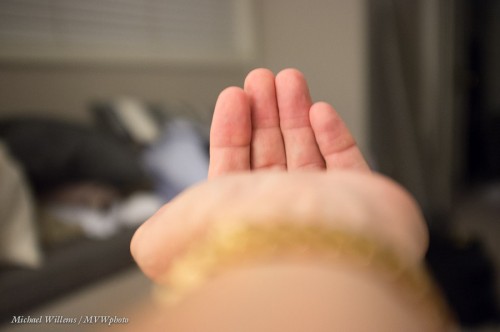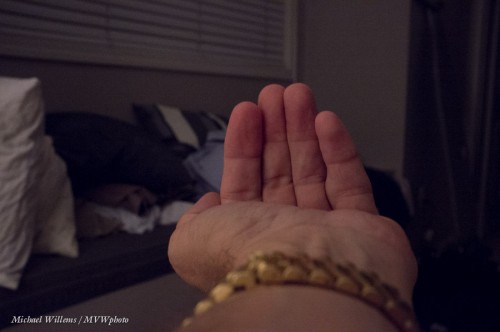I notice that sometimes, students do not want to ask basic questions. Well, my message is clear: do not worry. Ask.
A student recently had half completed a course and still did not know how to change the “f-number”. (Hint: on small cameras you may need to press and hold the diaphragm button while you turn the wheel).
So today, a basic basic point: aperture.
Here’s a photo taken at f/2. I focused on the hand:
And now I do it again, this time at f/8 (all other settings are the same). Again, I focused on the hand. The image now looks like this:
We see the following:
- I focused on the hand, so the hand is sharp in both cases.
- In photo 2. f/8 is a higher f–number, but the photo is darker; hence a higher f-number means a smaller opening (“aperture”) in the lens.
- In photo 2, the background and foreground are sharper. In photo 1, it is blurry. So, all other things being equal, a lower f–number means a blurrier background.
You need to understand these basics and be fully familiar with them.
So, a low number like f/2.2 at close distance gives you this: a great blurred background.
To make things easy, the camera was in manual mode for all these shots.
Q: The second shot has a sharper background, which conceivably is what I wanted; but it is darker, which is not what I wanted. How could I have fixed this latter problem?




Slower shutter speed then higher iso last.
Oh, you were paying attention!